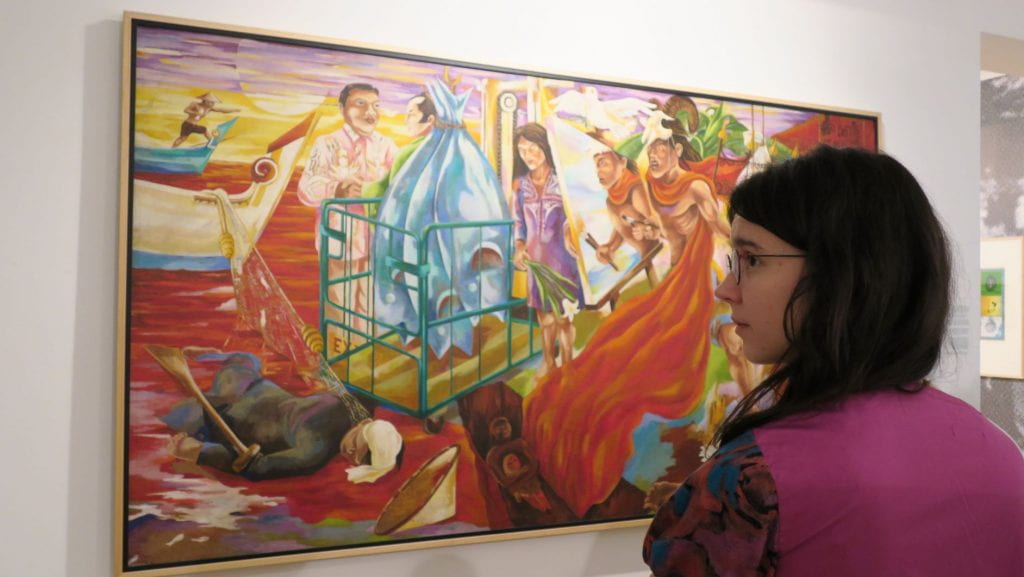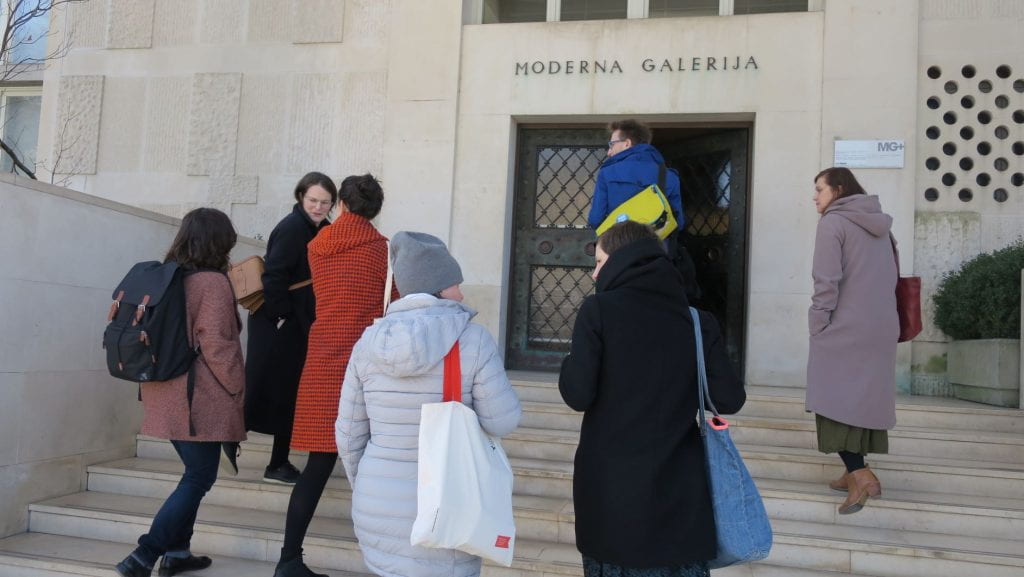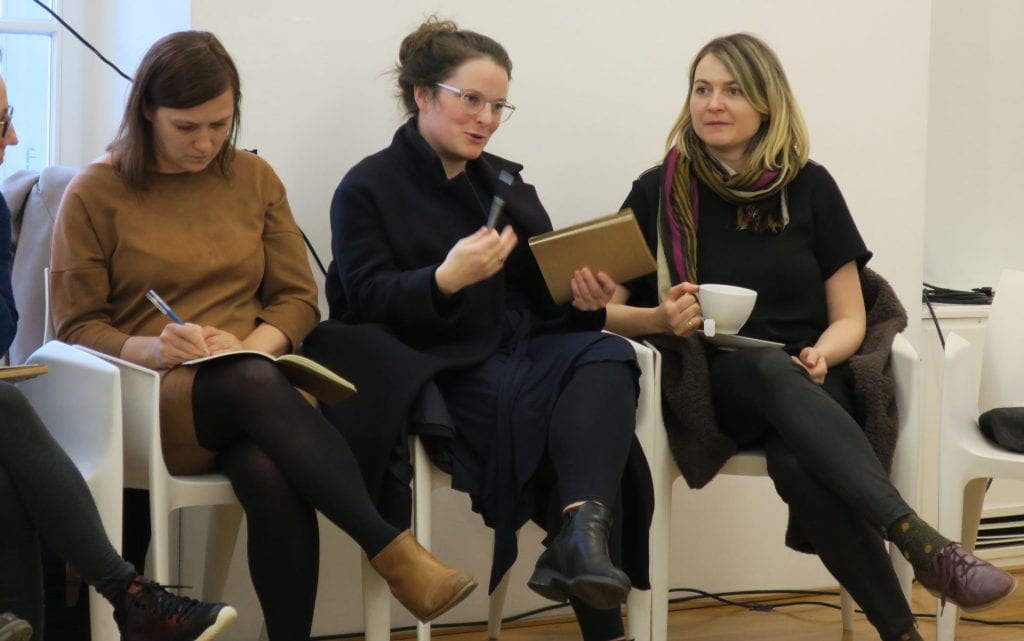 During our stay in Ljubljana we visited the exhibition Southern Constallations at Moderna galerija – Museum of Contemporary Art Metelkova. This impressive show, curated by Bojana Piškur and based on her long-term research, presented the role of arts, cultural collaboration, exchange and diplomacy in the history of the Non-Aligned Movement. The movement was a political initiative, founded officially in the early 1960s, in which countries belonging to neither of the two Cold War blocks were involved. They were mainly Third World African and Asian countries but also Yugoslavia which pursued its “third way”. And it was from the perspective of Yugoslavia, quite obviously, as one of the non-aligned countries which had initiated the movement, that the exhibition approached the whole issue. The show combined historical documentation of different cultural exchanges and initiatives within the network of the non-aligned countries, along with some artworks from between the early 1960s and the late 1980s, and contemporary artists interventions.
During our stay in Ljubljana we visited the exhibition Southern Constallations at Moderna galerija – Museum of Contemporary Art Metelkova. This impressive show, curated by Bojana Piškur and based on her long-term research, presented the role of arts, cultural collaboration, exchange and diplomacy in the history of the Non-Aligned Movement. The movement was a political initiative, founded officially in the early 1960s, in which countries belonging to neither of the two Cold War blocks were involved. They were mainly Third World African and Asian countries but also Yugoslavia which pursued its “third way”. And it was from the perspective of Yugoslavia, quite obviously, as one of the non-aligned countries which had initiated the movement, that the exhibition approached the whole issue. The show combined historical documentation of different cultural exchanges and initiatives within the network of the non-aligned countries, along with some artworks from between the early 1960s and the late 1980s, and contemporary artists interventions.

For me, given the context of our Confrontations project and the issues we were dealing with during our visit to Zagreb and – especially – to Ljubljana, Southern Constellation really pinpointed the question of East European art history. It is significant that Moderna galerija, which has been playing an important role in the formation and development of studies on East European art of the second half of the XXth century (e.g. the exhibitions Body and the East, 1998; Interrupted Histories, 2006), seems now to be taking a different direction and trying to rediscover Yugoslavia’s participation in a global but at the same time non-Western network. I quess that one of the agendas behind looking for such a forgotten, “interrupted” history of another globality is to position one’s own local art production within the narrative of global art history on one’s own terms: to stress one’s specificity and difference with regard to Western globalisation by showing one’s connections to the “Third World”, “postcolonial”, “(semi)peripheral”, “Global South” etc. networks, but also, by the same token, to avoid the reduction of all Europe to Western Europe, not so uncommon in postcolonial studies. 
 In this sense, the exhibition staged what seems to be a need for reinventing East European art history studies, especially ones that deal with the socialist period. Obviously, this need is not new, it has been with us for some time but it poses a task that is far from complete and yet to perform. It is a task of writing a history that still aims at establishing the specificity of a given local – national or regional – East European art phenomenon but shows it in its actual translocal connectedness, or transnational interdependency, not only within the Eastern bloc and across the West/East divide but also within other global networks next to it or beyond it. This can be, of course, applied not only to the art of Yugoslavia but also to that of other East European countries as well. After all, despite its participation in the Non-Aligned Movement, Yugoslavia was no exception here.
In this sense, the exhibition staged what seems to be a need for reinventing East European art history studies, especially ones that deal with the socialist period. Obviously, this need is not new, it has been with us for some time but it poses a task that is far from complete and yet to perform. It is a task of writing a history that still aims at establishing the specificity of a given local – national or regional – East European art phenomenon but shows it in its actual translocal connectedness, or transnational interdependency, not only within the Eastern bloc and across the West/East divide but also within other global networks next to it or beyond it. This can be, of course, applied not only to the art of Yugoslavia but also to that of other East European countries as well. After all, despite its participation in the Non-Aligned Movement, Yugoslavia was no exception here.
(Tomasz Załuski)
 A working dinner on our arrival in Ljubljana was an opportunity to engage with the work of renowned Slovenian curator and theorist Igor Zabel (1958-2005) and revisit from a contemporary perspective the historiography of East European art and its origins in the critical debates of the first post-communist decade. Participants took turns commenting on short theoretical extracts of his writing, with Daniel Véri and Magdalena Moskalewicz assigned the following to analyse: “An Eastern artist now becomes attractive for the West, not as somebody producing universal art, but exactly as someone who reflects his particular condition. He is not an only an artist, but particularly a Russian, Polish or Slovene artist, or simply an Eastern artist.”
A working dinner on our arrival in Ljubljana was an opportunity to engage with the work of renowned Slovenian curator and theorist Igor Zabel (1958-2005) and revisit from a contemporary perspective the historiography of East European art and its origins in the critical debates of the first post-communist decade. Participants took turns commenting on short theoretical extracts of his writing, with Daniel Véri and Magdalena Moskalewicz assigned the following to analyse: “An Eastern artist now becomes attractive for the West, not as somebody producing universal art, but exactly as someone who reflects his particular condition. He is not an only an artist, but particularly a Russian, Polish or Slovene artist, or simply an Eastern artist.” Close
Close





















